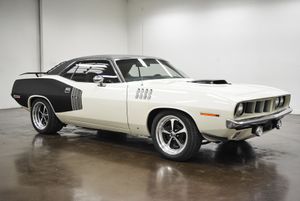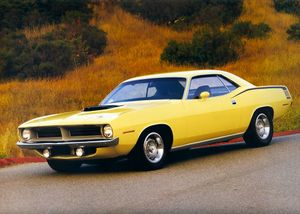Chevrolet Corvette - America's most iconic sports cars.
Chevrolet Corvette - America's most iconic sports cars.
At the time, the 1953 Chevrolet Corvette was little more than a show car for Motorama. However, initial reactions from the media and the public were enough to ensure that Chevrolet had no choice but to start production immediately. The roadster’s original design came from Harley Earl, GM’s original head of design. It was the 1953 Corvette show car that caught the eye of Zora Arkus-Duntov, an engineer that would go on to take the Corvette to new heights after writing Chevrolet chief engineer Ed Cole a letter requesting to work on the car. Upon retirement, Earl passed the torch to Bill Mitchell who then employed Larry Shinoda to design the next generation of Corvette. Arkus-Duntov remained instrumental in the direction of the Corvette throughout the 1970s which earned him the name “The Father Of The Corvette.”
Over a span of 68-years and eight generations the Corvette has gone through many changes along its journey to its current status of American Automotive Legend. It all started with an underpowered roadster then turned into a highly capable sports car. Today the Corvette, with its mid-engine design, is more akin to a supercar and there are talks of implementing EV technology into the design. While this may be an upset to the car’s fan base, it may also be very fitting, as the Corvette has repeatedly been used by GM for product development to the extent that it can be said that most of today’s GM technology made its debut on America’s Sports Car.
Generations
First-generation: C1 (1953–1962)
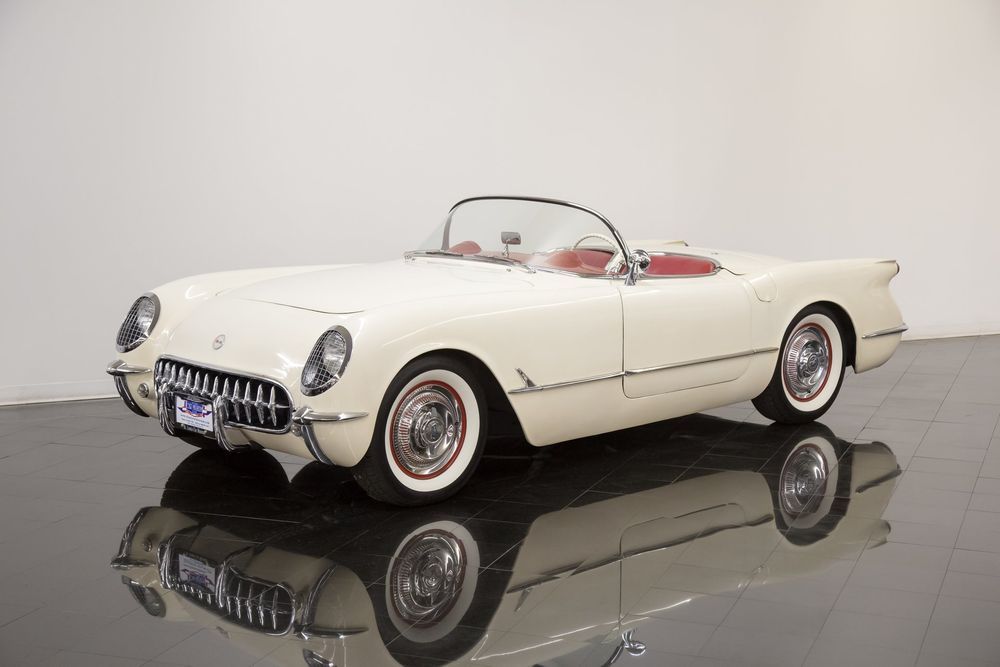
In all, 300 1953 Corvettes were handmade. All of them were convertibles and all of them wore a Polo White finish. After that successful partial premiere production year, 1954 marked the first full production year. Production numbers jumped to over 3k-units and available options included three additional colors. Initially, the Corvette only had one powertrain option, a 235-cid inline 6 (Blue Flame) engine, and a two-speed automatic Powerglide transmission. Although the engine produced decent power for what it was, it did not do the Corvettes reputation of being a solid contender to the Cadillacs and Jaguars of the time any favors. 1955 marked the roadster’s first V8 engine option and it was that 195-horsepower 265-cid engine that nudged Chevy in the right direction with many upgrades coming the following year.
A new exterior styling with concave sides and an optional two-tone paint scheme and the addition of a more powerful and fuel-efficient Turbo-Fire 265-cid V8 engine and a close-ratio 3-speed manual gearbox are just a few of the changes that helped put sales numbers for the 1956 model year back on track. For the first year ever, the Corvette was now available with outside door handles, roll-up windows, and an optional removable hardtop. 1957 saw the introduction of a new 283-cid engine and a Fuel Injected option that produced a national record of 1-bhp per cubic inch. Nearly 7,000 examples were produced that year. Styling, power, and production numbers continued to rise before peaking for the final year of the C1 Corvette. Chevy’s halo roadster had become a crisp-styled sports car with an available 360-horsepower. In all, over 69k C1 Corvettes were made.
Second-generation: C2 (1963–1967)
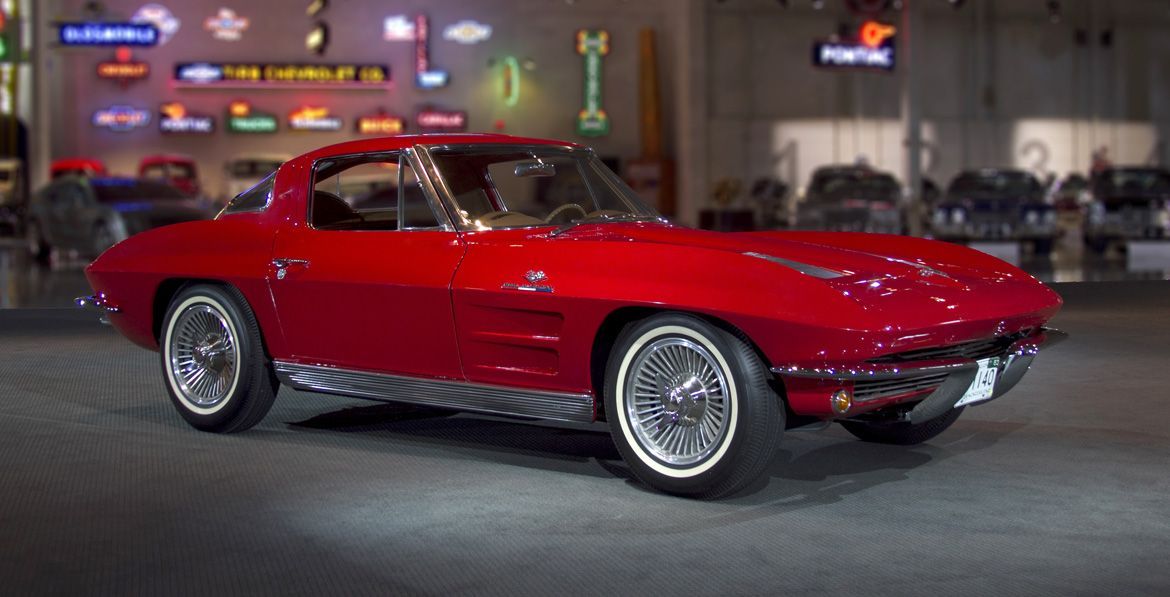
Moving into its second-generation, the C2 Corvette became known to many enthusiasts as the best American sports car of all time. For what is commonly referred to as the mid-years, the car was completely redesigned. A new aerodynamic body, a fastback coupe labeled the split-window, was introduced as was a new independent front and rear suspension system. The 327-cid engine remained standard and outputs ranged from 250 to 360-horsepower. Although the Corvette was clearly special and could barely be compared to anything else on the road, many of the parts used were now interchangeable with other GM models and production jumped to over 20k.
In 1964, the split-window design was discarded for a single-piece rear window, and power was bumped to 375-horsepower. Big block offerings came in the form of 390 and 425-horsepower variants in 1966. Transmission options grew and so did production numbers. 1967 marked the final year of the C2 Corvette and is considered to be one of the best-selling years to date. Many special cars were made throughout the mid-year generation and many legendary names were born including the Sting Ray, the Grand Sport, the Z06, and the L88. This generation also represents the first time the Corvette would be imagined as a mid-engined design.
Third-generation: C3 (1968–1982)
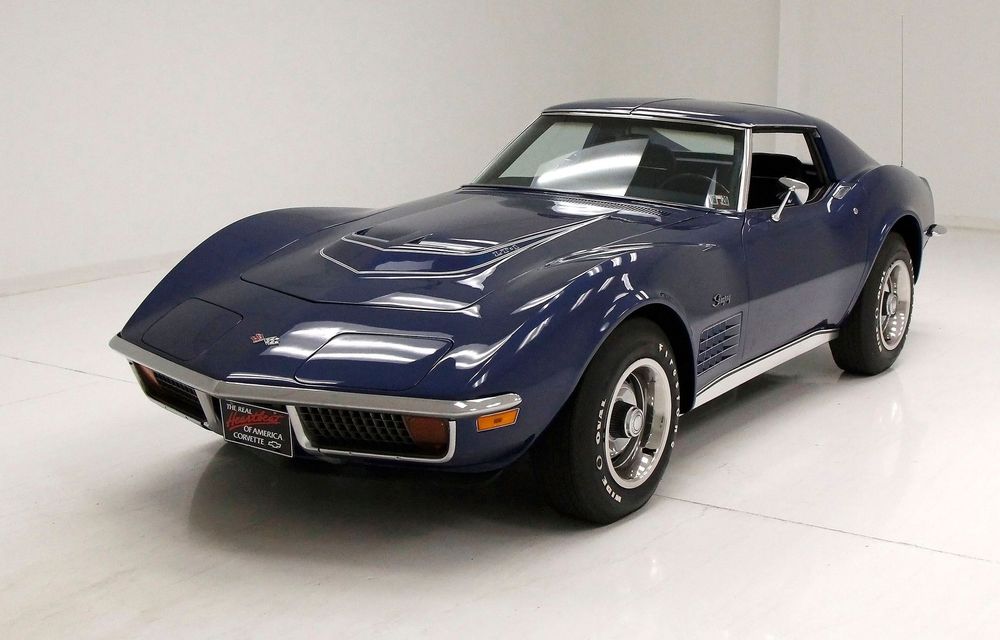
Once again, the thought of making the Corvette a mid-engined car was on the table but instead Chevy’s team of engineers decided to continue with a traditional layout carrying over the Stingray moniker. The result was one of the longest generations of the Corvette. It can also be accredited as the generation of massive change and special editions. The ZR1, ZR2, ZL1, Astrovettes, Corvette America, an Indy 500 Pace Car, and a Collector’s Edition were among the limited and special edition models of the third generation.
Keeping the same basic shape, the C3 slowly evolved into a more modern-looking car. Performance fluctuated throughout this generation as well, thanks to changing regulations. 1979 set a sales record with over 53k examples being produced. By 1982, the Corvette’s power output had dwindled to just 200-horsepower and it was clear that the car needed to be updated. Unfortunately, production delays pushed that upcoming update back and the Corvette took a hiatus from production for the first and only time ever in 1983.
Fourth-generation: C4 (1984–1996)
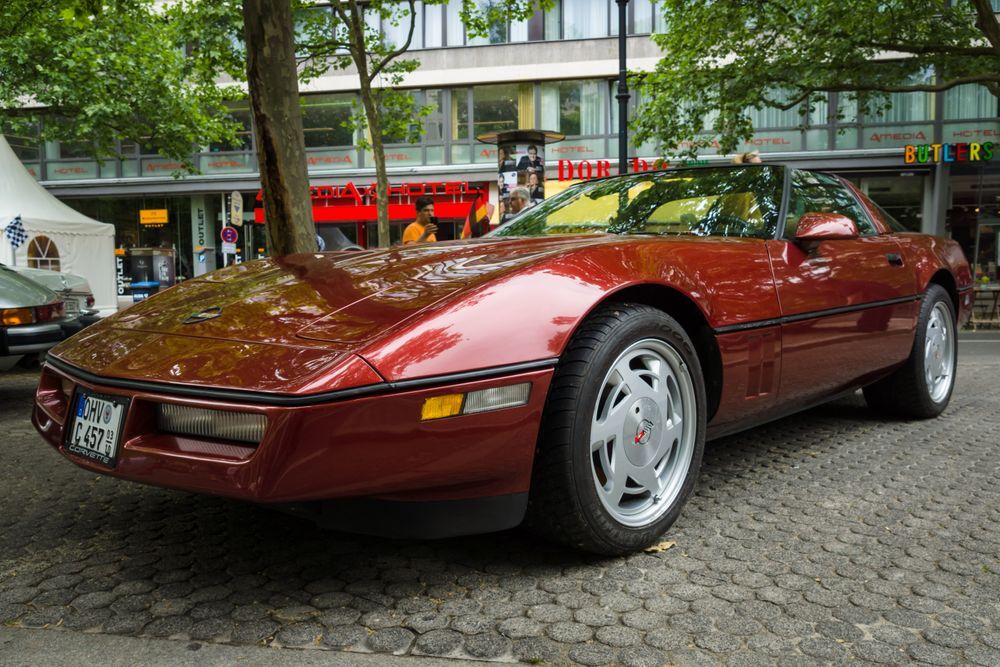
Chief Corvette designer Dave McLellan was tasked with bringing the Corvette into the modern era. Stepping away from his predecessor’s design, McLellan created a more comfortable Corvette with a sleeker style. Thanks to a glass hatchback design the car now had a more accessible storage space which was large enough for a set of golf clubs. This only perpetuated the Corvette’s image of being the official car of the mid-life crisis. However, this generation was a revolutionary one in many ways. A digit display was now featured on the dash, the styling was more aerodynamic than ever before, braking and handling were better than any other generation, and the high-performance engine options were back with a vengeance.
Among the special editions for the C4 generation were two Anniversary Editions, two Indy Pace Cars, a Brickyard 400 Festival/Parade Car, the Grand Sport, a Collector Edition, and of course, the most capable ZR-1 up to that point. The ZR1’s LT5 engine was the product of a collaboration between GM and Lotus, giving the Corvette a 375-horsepower rating which was later raised to 405-horsepower. As powerful as the new ZR1 was, the bragging rights for the fastest C4 produced is the B2K Callaway Twin-Turbo, a variant of which an 880-horsepower variant went over 250-mph.
Fifth-generation: C5 (1997–2004)
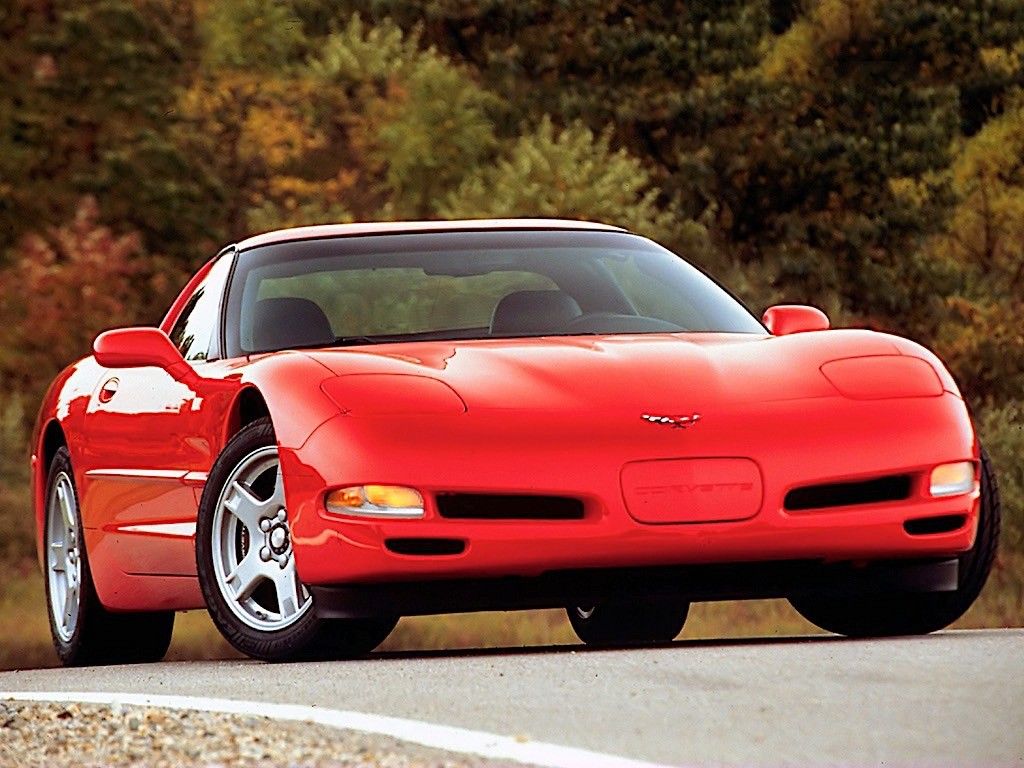
This new generation brought big changes for the Corvette. Starting with a hydroformed box frame, everything mechanical and visual alike was now all new. Replacing the LT engine of the previous generation was the LS1 engine that produced 345-horsepower. Wanting to improve the Corvette’s weight distribution and handling characteristics, Chevy moved to a rear-mounted transaxle setup connecting the engine to the transmission by way of a torque tube. This resulted in a 50/50 weight distribution which aided in handling and improved traction and ride quality. Another improvement of note was that the C5 was the first Corvette to have a trunk since the 1960s.
Initial body styles were limited to only a fastback coupe and a convertible but later a hardtop was added. Although the car was still being used by GM to roll out new technology, the C5 Corvette did not change much visually from year to year after the 1999 model year. Some of the changes included a gradual bump in power output, peaking with 405-horsepower in 2004, and the addition of a heads-up display. The generation was a highly successful one that proved the Corvette could both keep up with Ferrari and be fuel-efficient enough to avoid the Gas-Guzzler Tax. In keeping with tradition, there were many special editions of the C5 Corvette. This included the Z06, an Indy 500 car, a 50th Anniversary Edition, and a Commemorative Edition.
Sixth-generation: C6 (2005–2013)
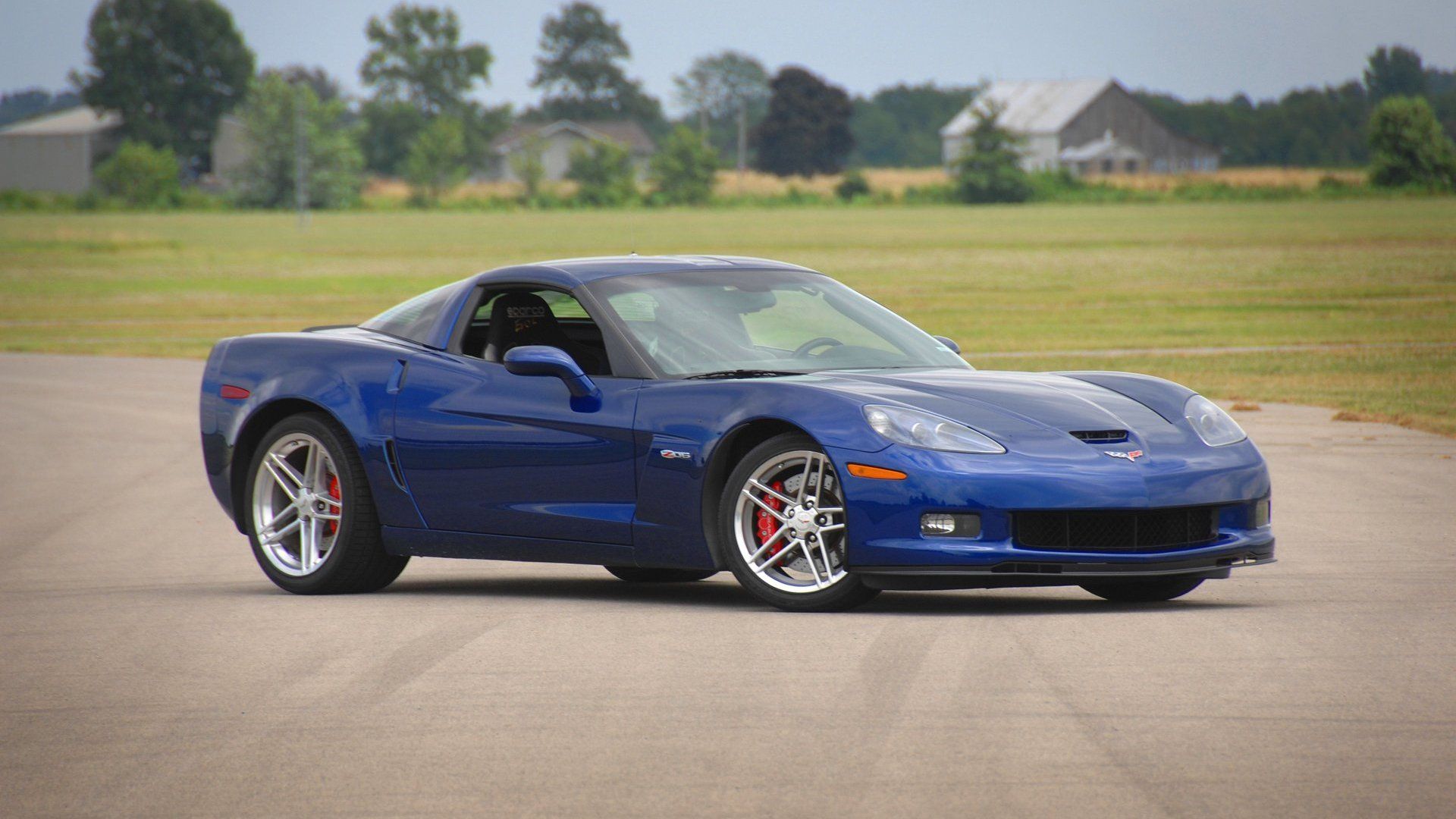
Now in its sixth generation, the Corvette received reworked bodywork, a new more powerful LS engine, and a revised suspension. For the first time in over 40-years, the Corvette’s design did not feature popup headlights. A 6.0-liter LS2 engine making over 400-horsepower became the standard engine, however, Chevrolet offered many special models, such as the Z06 and ZR1 with larger more powerful versions of the LS. In all, four engines were offered over the course of the generation, the most powerful of which was the supercharged 6.2-liter LS9 V8 that produced 638-horsepower.
Many revered names made a reappearance under this Corvette’s sixth generation. The Z06, ZR1, and Grand Sport were all back and more powerful than ever before. One of the most highly anticipated versions of the car was the ZR1. Codenamed the Blue Devil, the ZR1 was rumored to be the most capable Corvette ever produced to date and it did not disappoint. With a 2.9-second 0-60-mph time and a top speed of over 200-mph, the 2009 ZR1 was the fastest production Corvette Chevy had ever made.
Seventh-generation: C7 (2014–2019)
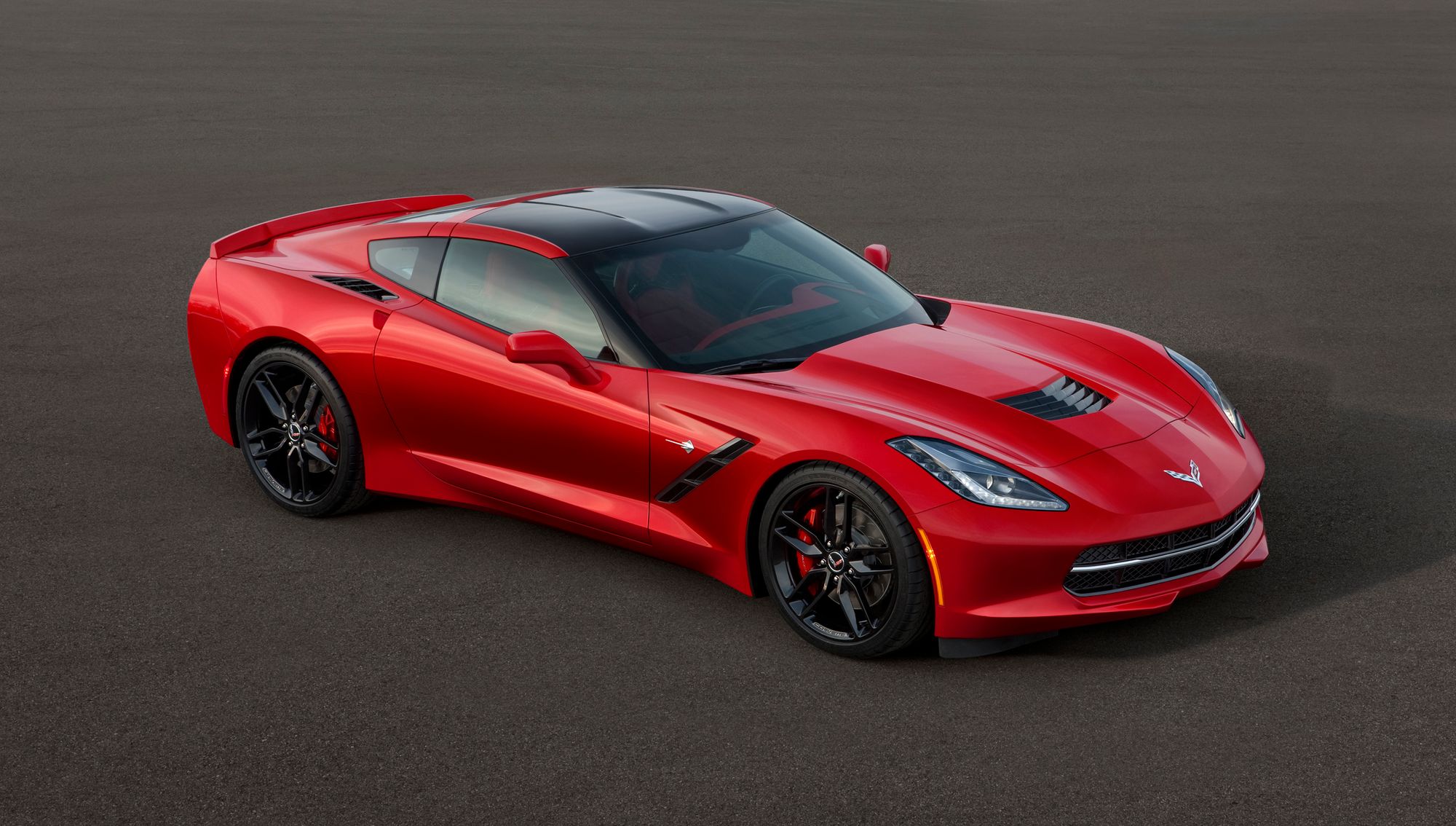
Following the pattern laid out by the previous generation, the Corvette’s design team completely redesigned the Corvette with one of the biggest change-ups the model has ever seen. No longer was the Corvette simply a quick American sports car, it was more of a supercar. A standard LT1 engine made 455-horsepower capable of accelerating the Corvette to 60-mph in just 3.8-seconds. Instead of hiding the headlights behind a body-colored panel, the car now wore highly-styled LED headlights that were worked into an angular body design. Doors were now more sharply styled and the rear end was completely reworked to keep with the overall design.
In 2019, the ZR1 became the most powerful Corvette to ever be produced. With 755-horsepower, a choice between a 7-speed manual transmission or an 8-speed automatic transmission, and a MagneRide suspension, the ZR1 was now faster than ever before. Shortly after Ford released the GT’s lap record time at the Virginia International Raceway, Chevrolet set the record with a lap of 2:37.25 beating both Ford and Dodge records.
Eighth-generation: C8 (2020–present)
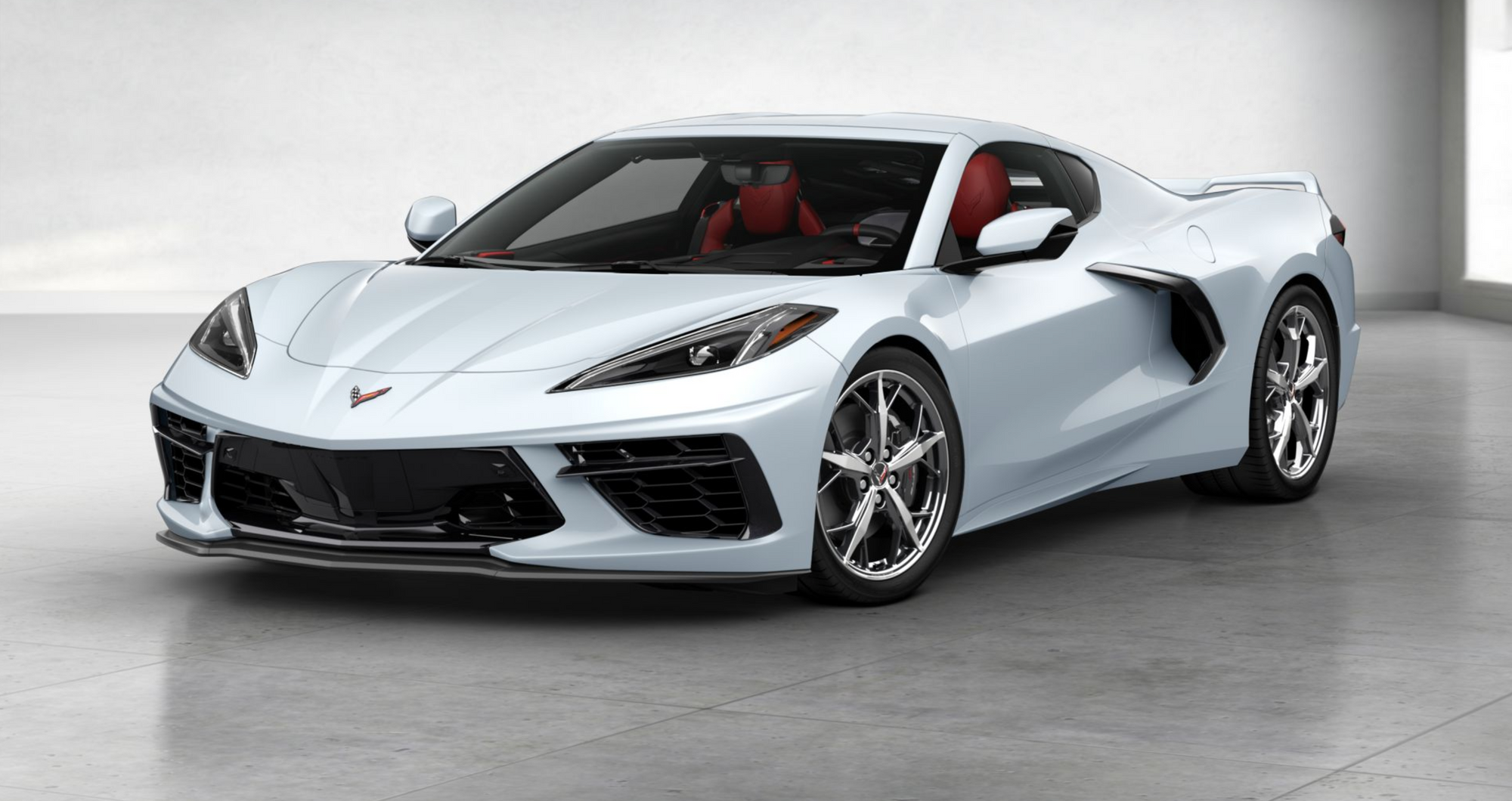
A successful seventh-generation left the Corvette’s designers out of options for continuing the Corvette as a traditional front-engine, rear-wheel-drive car. It was clear that that platform had had its limits pushed to the breaking point. This led designers to finally pull the trigger on a vision that the father of the Corvette himself was unable to see through, a mid-engine Corvette. This required a complete ground-up redesign of the car and a stronger focus on aerodynamics. Nearly all of the new Corvettes bodywork is purposeful and functional. In addition to better handling characteristics, the new design also allowed for a more comfortable interior and more storage space.
490-horsepower is provided by a new naturally aspirated 6.2-liter LT2 V8 engine mated to an 8-speed dual-clutch automated transmission. Capabilities include an advertised 2.9-second sprint to 60-mph, although some independent testing has revealed that number to be underrated. Currently, only two body styles are offered, a Targa top and a hardtop convertible. Despite the absence of any super high-performance trims such as the Z06 and the ZR1, the C8 Corvette represents the most powerful and capable base model Corvette ever created.
Production
In total, America’s Sports Car has been in production for 68-years with a hiatus in 1983 due to production issues. Production had a slow boil with only 300 models for the first year, obviously all convertibles. The next year would see a 10-fold increase of 3,640 models sold. When the Corvette roared into the second-generation, 21,513 examples would leave dealer floors.
The third generation would see a steady movement of around the mid-20Ks per year. It might be the one year hiatus that sparked demand, but the fourth-generation kicked off with a massive jump to 51,547 Corvettes sold. However, that would be the last year any production numbers moved above 50K a year; with not even 10K Corvettes sold during the first year of the C, with an upswing the following year.
Over the first generation, 72,015 were sold total. The very short run of the C2 saw 117,966 units sold, and the longest running generation (C3) would have the highest sales of 542,861 cars moved. From there, it’s been a it of a decline, but also shorter generations with 358,180 sold for the C4, 217,728 sold of the C5, 201,753 of the C6 models sold, and 151,762 total Corvettes sold in seventh-generation.
As far as numbers for the C8, the general impression is that the C8s are in high-demand, but Covid-19 had other plans for the newest generation Corvette. Demand has never truly been met, so until production outpaces demand, we won't know precisely how well-received the latest Corvette has been.
About the Knowledge Base
The Motorious Knowledge Base provides comprehensive vehicle overviews for Classic & Collector Cars including production numbers, performance specs, factory colors, and OEM brochures. Check out related content linked to this article or view other Makes and Models in our Research center.
If you have any interesting facts about the Chevy Corvette to add, want to tell us how we did covering the Mustang, or want to tell us about yours, please leave a comment below.


